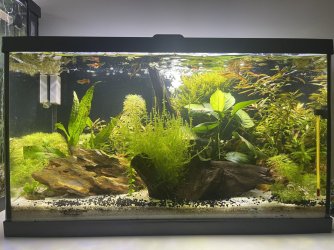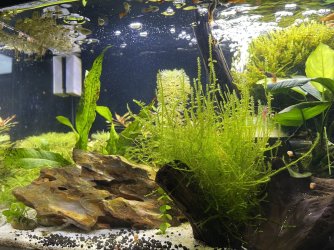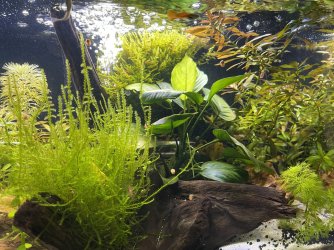joelfernandes
Fish Fanatic
Hello all.
I have a 10-gallon tank with live plants and quite some livestock as well: about a dozen endlers, maybe 10 adult cherry shrimps, maybe 20 more baby shrimps and a dozen baby ramhorn snails. My last water change was two weeks ago, and I've been testing the water, and there's no sign of ammonia, nitrites or nitrates at all in the water (I mean, zero!). There's also no algae, so I'm wondering now if I should even mess with it and do a water change. The water is very clear, especially considering I only have a small sponge filter on it (the large one on the right here).
What do y'all think? Should I still do a water change? When should I? After so many sad speedbumps when I started the hobby about a year ago, I'm concerned this is too good to be true. It's been hard to get here today
I would love some advice.
Thank you.



I have a 10-gallon tank with live plants and quite some livestock as well: about a dozen endlers, maybe 10 adult cherry shrimps, maybe 20 more baby shrimps and a dozen baby ramhorn snails. My last water change was two weeks ago, and I've been testing the water, and there's no sign of ammonia, nitrites or nitrates at all in the water (I mean, zero!). There's also no algae, so I'm wondering now if I should even mess with it and do a water change. The water is very clear, especially considering I only have a small sponge filter on it (the large one on the right here).
What do y'all think? Should I still do a water change? When should I? After so many sad speedbumps when I started the hobby about a year ago, I'm concerned this is too good to be true. It's been hard to get here today
I would love some advice.
Thank you.







